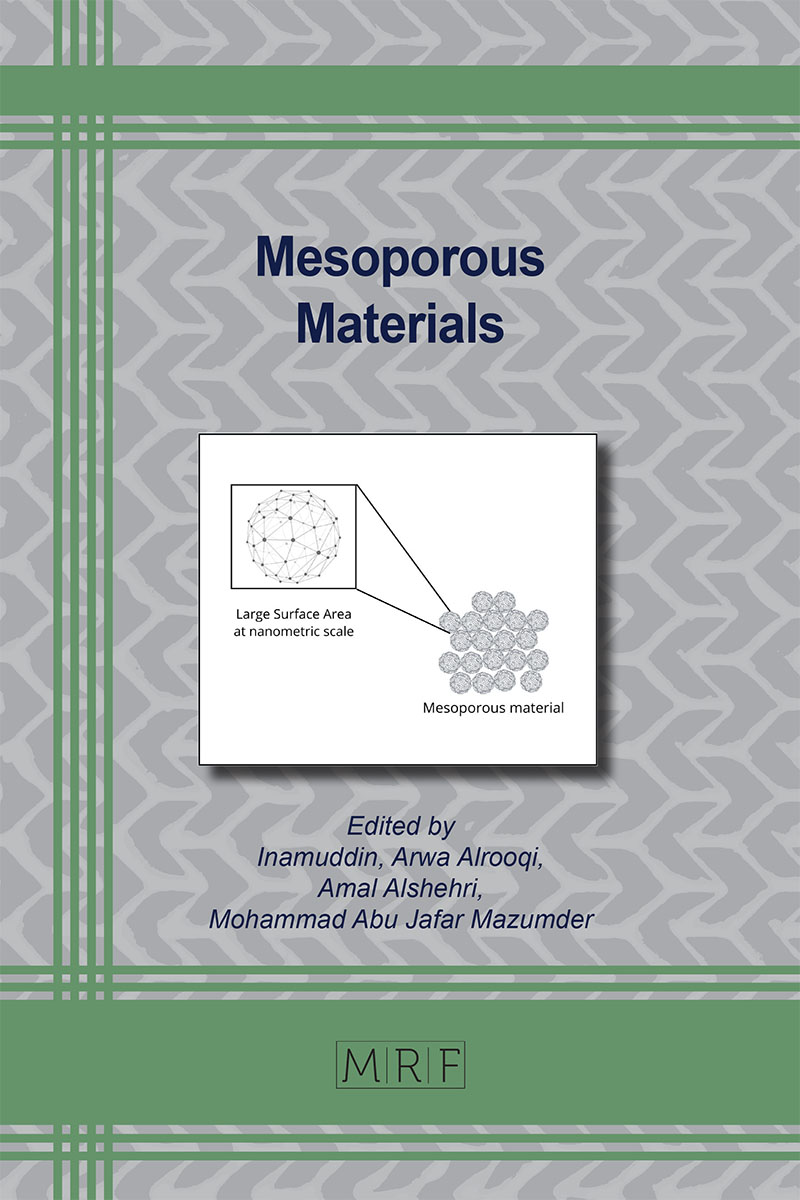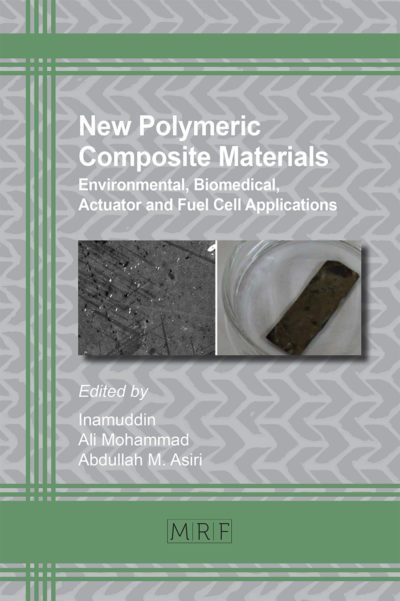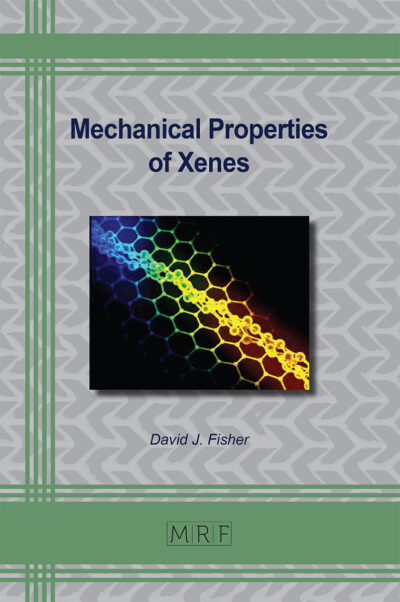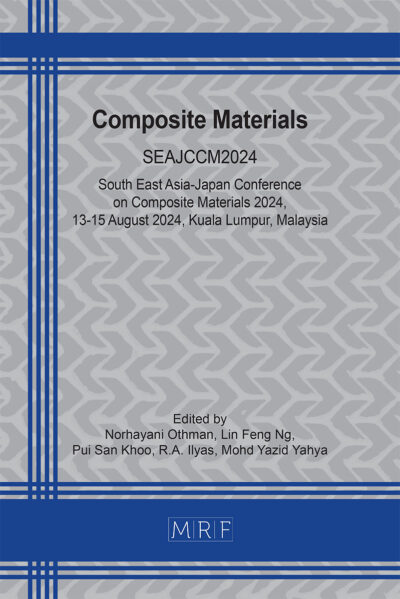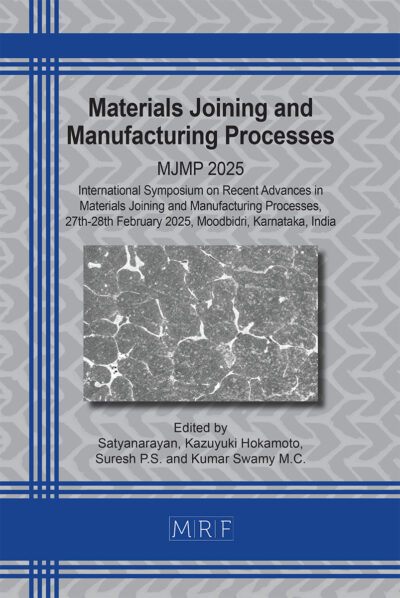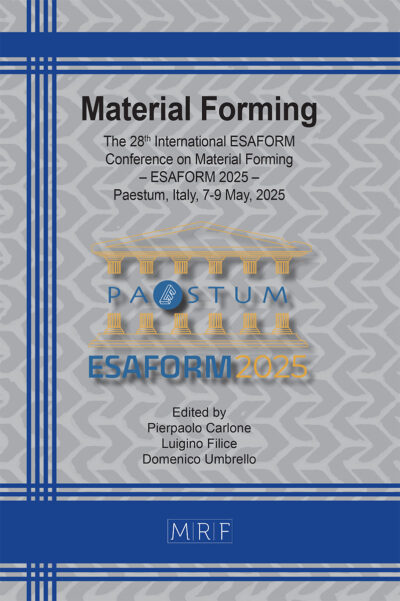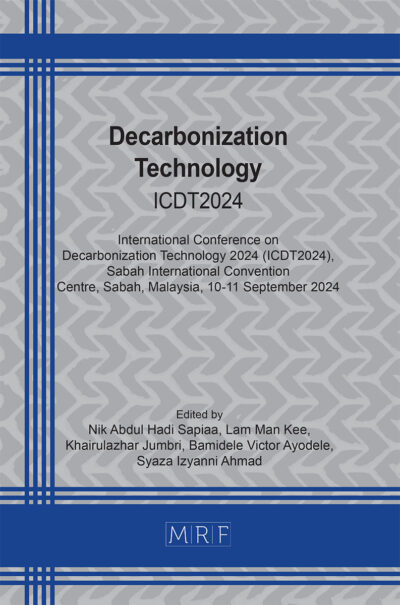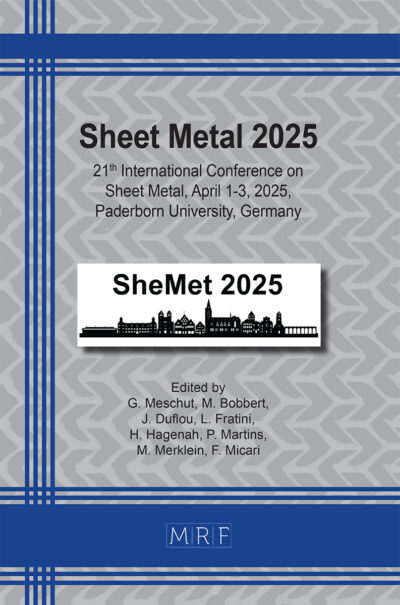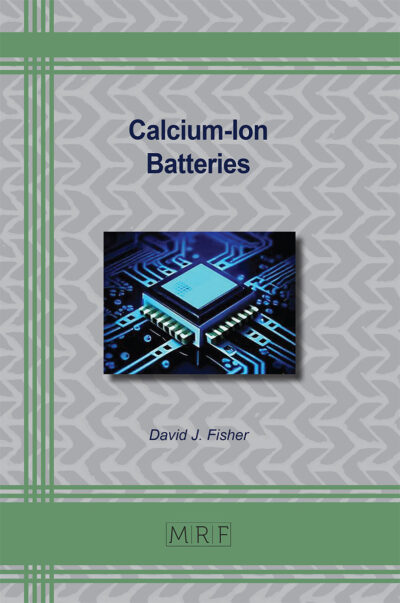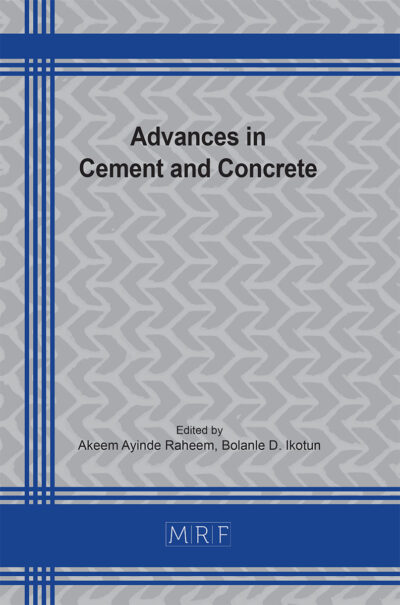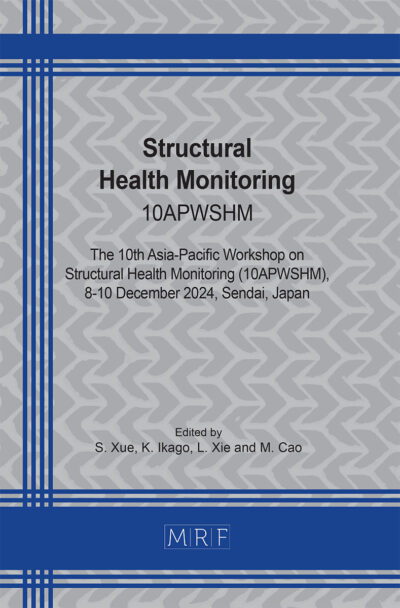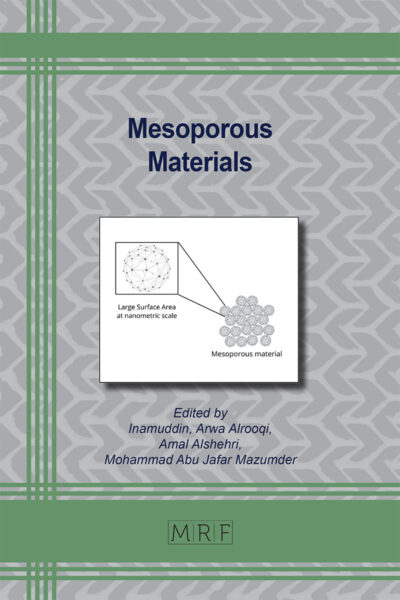Mesoporous Materials for Adsorptive Removal of Dyes
Angel R. Hernandez-Martinez, A.L. Ramos-Jacques
Water pollution is an environmental challenge globally, particularly in relation to industrial effluents. Adsorption has been widely used for wastewater treatment. This chapter addresses the use of mesoporous materials for dyes adsorption in wastewater, presenting recent advances in their synthesis, the properties that make them suitable for this purpose, and examples of successful applications. The development of mesoporous materials as adsorbents is aligned with current trends towards the use of sustainable and inexpensive materials, and their structure allows for greater interaction between contaminants and the surface of these materials, improving the adsorption efficiency of contaminants.
Keywords
Wastewater Treatment, Materials Engineering, Synthesis, Biodegradable Adsorbents, Industrial Effluents
Published online 3/20/2025, 20 pages
Citation: Angel R. Hernandez-Martinez, A.L. Ramos-Jacques, Mesoporous Materials for Adsorptive Removal of Dyes, Materials Research Foundations, Vol. 173, pp 40-59, 2025
DOI: https://doi.org/10.21741/9781644903452-2
Part of the book on Mesoporous Materials
References
[1] G. Ravindiran, R.M. Jeyaraj, G. Nandipati, S. Seerangagounder, N.l Al-Zaqri, A. Boshaala, G. Hayder, Prevention of groundwater contamination from the pollutants released from dyeing industries using biochar produced from palm shell, Urban Climate 49 (2023) 101515. https://doi.org/10.1016/j.uclim.2023.101515
[2] J.S. Beck, J.C. Vartuli, W.J. Roth, M.E. Leonowicz, A new family of mesoporous molecular sieves prepared with liquid crystal templates, J. Am. Chem. Soc. 114 (1992) 10834–10843.
[3]. R.i Dariush, Pseudo-second-order kinetic equations for modeling adsorption systems for removal of lead ions using multi-walled carbon nanotube, J. nanostructure Chem. 3 (2013): 1-6. https://doi.org/10.1186/2193-8865-3-55
[4] C.T. Kresge, M.E. Leonowicz, W.J. Roth, J.C. Vartuli, J.S. Beck, Ordered mesoporous molecular sieves synthesized by a liquid-crystal template mechanism, Nature 359 (1992) 710–712.
[5] S. Dutta, S.l Adhikary, S. Bhattacharya, D. Roy, S. Chatterjee, A. Chakraborty, D. Banerjee, A. Ganguly, S. Nanda, P. Rajak, Contamination of textile dyes in aquatic environment: Adverse impacts on aquatic ecosystem and human health, and its management using bioremediation, J. Environ. Manage. 353 (2024), 120103. https://doi.org/10.1016/j.jenvman.2024.120103
[6] D. Khandelwal, I. Rana, V. Mishra ,K.R. Ranjan, P. Singh, Unveiling the impact of dyes on aquatic ecosystems through zebrafish – A comprehensive review, Environ. Res. 261 (2024) 119684. https://doi.org/10.1016/j.envres.2024.119684
[7] F. Benmahdi, S. Khetta, A. Khelali, M. Kolli, High-quality mesoporous adsorbent derived from pomegranate pomace for efficient removal of azo dye from textile wastewater: Influencing factors, reusability, and mechanism studies, J Indian Chem Soc. 101 (2024) 101320. https://doi.org/10.1016/j.jics.2024.101320
[8] K.K. Beltrame, A.L. Cazetta, P.S. De Souza, L. Spessato, T.L. Silva, V.C. Almeida, Adsorption of caffeine on mesoporous activated carbon fibers prepared from pineapple plant leaves, Ecotoxicol. Environ. Saf. 147 (2018) 64–71, https://doi.org/10.1016/j.ecoenv.2017.08.034.
[9] P. Zhang, M. He, W. Teng, F. Li, X. Qiu, K. Li, H. Wang, Ordered mesoporous materials for water pollution treatment: Adsorption and catalysis, Green Energy & Environment, 9(8) (2024), 1239-1256. https://doi.org/10.1016/j.gee.2023.11.001
[10] J. Castro-Gutiérrez, J. Jagiello, A. Celzard, V. Fierro, Introducing a novel Hierarchy-Connectivity factor for characterizing micro-mesoporous materials, Chemical Engineering Journal 497 (2024) 154938. https://doi.org/10.1016/j.cej.2024.154938
[11] F. Liebau, Ordered microporous and mesoporous materials with inorganic hosts: definitions of terms, formula notation, and systematic classification, Microporous and Mesoporous materials 58 (2003) 15-72. https://doi.org/10.1016/S1387-1811(02)00546-2
[12] A. Taguchi, F. Schüth, Ordered mesoporous materials in catalysis, Microporous Mesoporous Mater. 77 (2005) 1–45.
[13] L. Mercier, T.J. Pinnavaia, Direct synthesis of hybrid organic-inorganic nanoporous silica by a sol-gel process, Chem. Mater. 12 (2000) 188–196.
[14] J. Pérez-Ramírez, D. Verboekend, A. Bonilla, S. Abelló, Zeolite Catalysts with Tunable Hierarchy Factor by Pore-Growth Moderators, Adv. Funct. Mater. 19 (2009) 3972–3979, https://doi.org/10.1002/adfm.200901394.
[15] M.R. Benzigar, S.N. Talapaneni, S. Joseph, K. Ramadass, G. Singh, J. Scaranto, U. Ravon, K. Al-Bahily, A. Vinu, Recent advances in functionalized micro and mesoporous carbon materials: synthesis and applications, Chem. Soc. Rev. 47 (2018) 2680–2721, https://doi.org/10.1039/C7CS00787F.
[16] W. Xin, Y. Song, Mesoporous carbons: recent advances in synthesis and typical applications, RSC Adv. 5 (2015) 83239–83285, https://doi.org/10.1039/C5RA16864C,
[17] Q. Hu, R. Lan, L. He, H. Liu, X. Pei, A critical review of adsorption isotherm models for aqueous contaminants: Curve characteristics, site energy distribution and common controversies, Journal of Environmental Management 329 (2023) 117104. https://doi.org/10.1016/j.jenvman.2022.117104
[18] M.C. Carter, J.E. Kilduff, W.J. Weber, Site energy distribution analysis of preloaded adsorbents. Environ. Sci. Technol. 29, (1995) 1773–1780. https://doi.org/10.1021/acsagscitech.3c00341
[19] A. Sarkar, B. Paul, Evaluation of the performance of zirconia-multiwalled carbon nanotube nanoheterostructures in adsorbing As(III) from potable water from the perspective of physical chemistry and chemical physics with a special emphasis on approximate site energy distribution,Chemosphere 242 (2020) 125234. https://doi.org/10.1016/j.chemosphere.2019.125234
[20] H. Huan, L. Hou, F. Zhu, J. Li, M. Xu, Controllable thermal and pH responsive behavior of PEG based hydrogels and applications for dye adsorption and release, RSC Adv., 8 ( 2018) 9334-9343. https://doi: 10.1039/C8RA01018H
[21] L. Jianghong, W. Xiaohang, Y. Dandan, R. Jingwei, X. Jian, Recent Advances in Preparation and Application of Functionalized Mesoporous Materials.On Recent Innovations in Chemical Engineering (Formerly Recent Patents on Chemical Engineering) 12.3 (2019): 239-247. https://doi.org/10.2174/2405520412666190705125639
[22] Seifikar, Fatemeh, S. Azizian, M. Sillanpää, Microwave-assisted synthesis of carbon powder for rapid dye removal.” Materials Chemistry and Physics 250 (2020) 123057. https://doi.org/10.1016/j.matchemphys.2020.123057
[23] G. Vishal, Md. Ahmaruzzaman, Smart materials for remediation of aqueous environmental contaminants, Journal of Environmental Chemical Engineering 9(6) (2021) 106486. https://doi.org/10.1016/j.jece.2021.106486
[24] A.R. Hernandez-Martínez, J.A. Lujan-Montelongo, C. Silva-Cuevas, J.D. Mota-Morales, M. Cortez-Valadez, Á.J. Ruíz-Baltazar, M. Cruze J. Herrera-Ordonez, Swelling and methylene blue adsorption of poly(N,N-dimethylacrylamide-co-2-hydroxyethyl methacrylate) hydrogel, Reactive and Functional Polymers 122 (2018) 75–84. https://doi.org/10.1016/j.reactfunctpolym.2017.11.008
[25] A.R. Hernández-Martínez, C. Silva-Cuevas, D. Rangel-Miranda, J.A. Lujan-Montelongo, Adsorption and swelling studies of 2-hydroxyethyl methacrylate- and N,N-dimethylacrylamide-based porous copolymers and their possible applications for QCM-sensors, Applied Surface Science 572 (2022) 151508. https://doi.org/10.1016/j.apsusc.2021.151508
[26] H. Shao, Y. Wang, H. Zeng, J. Zhang, Y. Wang, M. Sillanpää, X. Zhao, Enhanced photoelectrocatalytic degradation of bisphenol a by BiVO4 photoanode coupling with peroxymonosulfate, J. Hazard. Mater., 394 (2020), Article 121105, 10.1016/j.jhazmat.2019.121105
[27] S. Ben Hammouda, F. Zhao, Z. Safaei, D.L. Ramasamy, B. Doshi, M. Sillanpää, Sulfate radical-mediated degradation and mineralization of bisphenol F in neutral medium by the novel magnetic Sr2CoFeO6 double perovskite oxide catalyzed peroxymonosulfate: Influence of co-existing chemicals and UV irradiation, Appl. Catal. B Environ., 233 (2018), pp. 99-111, 10.1016/j.apcatb.2018.03.088
[28] M. Ghaedi, A. Ansari, F. Bahari, A.M. Ghaedi, A. Vafaei, A hybrid artificial neural network and particle swarm optimization for prediction of removal of hazardous dye brilliant green from aqueous solution using zinc sulfide nanoparticle loaded on activated carbon, Spectrochim. Acta Part A Mol. Biomol. Spectrosc., 137 (2015), pp. 1004-1015, 10.1016/j.saa.2014.08.011
[29] P. Assefi, M. Ghaedi, A. Ansari, M.H. Habibi, M.S. Momeni, Artificial neural network optimization for removal of hazardous dye Eosin Y from aqueous solution using Co2O3-NP-AC: isotherm and kinetics study, J. Ind. Eng. Chem., 20 (2014), pp. 2905-2913, 10.1016/j.jiec.2013.11.027
[30] Anbia, Mansoor, and Samira Salehi. “Removal of acid dyes from aqueous media by adsorption onto amino-functionalized nanoporous silica SBA-3.” Dyes and Pigments 94.1 (2012): 1-9. https://doi.org/10.1016/j.dyepig.2011.10.016
[31] J.A.S. Costa, R.A. de Jesus, D.O. Santos, J.B. Neris, R.T. Figueiredo, C.M. Paranhos, Synthesis, functionalization, and environmental application of silica-based mesoporous materials of the M41S and SBA-n families: A review, Journal of Environmental Chemical Engineering, 9(3) (2021) 105259. https://doi.org/10.1016/j.jece.2021.105259
[32] R.K.Khaled, M.A. Wahba, M.D. Badry, M.F. Zawrah, E.A. Heikal, Highly ordered pure and indium-incorporated MCM-41 mesoporous adsorbents: synthesis, characterization and evaluation for dye removal. Journal of Materials Science, 57(7) (2022) 4504-4527. https://doi.org/10.1007/s10853-022-06877-7
[33] R.J. Kadhim, F.H. Al-Ani, Q.F. Alsalhy, MCM-41 mesoporous modified polyethersulfone nanofiltration membranes and their prospects for dyes removal, International Journal of Environmental Analytical Chemistry 103(4) (2023) 828-848. https://doi.org/10.1080/03067319.2020.1865326
[34] M.A. Tahir, H.N. Bhatti, I. Hussain, I.A. Bhatti, M. Asghar, Sol–gel synthesis of mesoporous silica–iron composite: Kinetics, equilibrium and thermodynamics studies for the adsorption of Turquoise-Blue X-GB dye. Zeitschrift für Physikalische Chemie, 234(2), (2020) 233-253. https://doi.org/10.1515/zpch-2019-1443
[35] Q. Lei, J. Guo, A. Noureddine, A. Wang, S., Wuttke, C.J. Brinker, W. Zhu, Sol–gel‐based advanced porous silica materials for biomedical applications. Advanced Functional Materials, 30(41) (2020). 1909539. https://doi.org/10.1002/adfm.201909539
[36] L. Trupp, M.C. Marchi, B.C. Barja, Lanthanide–based luminescent hybrid silica materials prepared by sol-gel methodologies: a review. Journal of Sol-Gel Science and Technology, 102(1) (2022) 63-85. https://doi.org/10.1007/s10971-021-05678-9
[37] Y. Han, L. Zhang, W. Yang, Synthesis of Mesoporous Silica Using the Sol–Gel Approach: Adjusting Architecture and Composition for Novel Applications. Nanomaterials, 14(11) (2024) 903. https://doi.org/10.3390/nano14110903
[38] J. Liang, Y. Ge, Z. He, Q. Yun, G. Liu, S. Lu, L. Zhai, B. Huang, H. Zhang, Wet-chemical synthesis and applications of amorphous metal-containing nanomaterials, Nano Res (2021) 1-21. https://doi.org/10.1007/s12274-021-4007-6
[39] J. Zhu, P.-Z. Li, W. Guo, Y. Zhao, R. Zou, Titanium-based metal–organic frameworks for photocatalytic applications, Coord. Chem. Rev., 359 (2018) 80-101. https://doi.org/10.1016/j.ccr.2017.12.013
[40] Q. Du, P. Wu, Y. Sun, J. Zhang, H. He, Selective photodegradation of tetracycline by molecularly imprinted, ZnO@NH2-UiO-66 composites, Chem. Eng. J., 390 (2020) 124614. https://doi.org/10.1016/j.cej.2020.124614
[41] A. Hayat, S. Rauf, B. Al Alwan, A. El Jery, N.Almuqati, N., Melhi, S.,Melhi, A.A. Mohammed, A. Yas, S. Muhammad, O. Yasin, W. Lv, Recent advance in MOFs and MOF-based composites: synthesis, properties, and applications. Materials Today Energy, (41) (2024) 101542. https://doi.org/10.1016/j.mtener.2024.101542
[42] G. Durán-Jiménez, J. Rodriguez, L. Stevens, E.T. Kostas, C. Dodds, Microwave pyrolysis of waste biomass and synthesis of micro-mesoporous activated carbons: The role of textural properties for CO2 and textile dye adsorption. Chemical Engineering Journal, 488 (2024) 150926. https://doi.org/10.1016/j.cej.2024.150926
[43] Kopac, T., and S. D. Lin, A review on the characterization of microwave-induced biowaste-derived activated carbons for dye adsorption, International Journal of Environmental Science and Technology 21 (2024), 8717–8748. https://doi.org/10.1007/s13762-024-05583-y
[44] A.S. Umesh, Y.M. Puttaiahgowda, S. Thottathil, Enhanced adsorption: reviewing the potential of reinforcing polymers and hydrogels with nanomaterials for methylene blue dye removal. Surfaces and Interfaces, 51 (2024), 104670. https://doi.org/10.1016/j.surfin.2024.104670
[45] K. Shi, Z. Wang, J. Luo, G. Qian, Y. Luo, M. Li, H. Yao, Construction of novel NH2-Al-SBA-15 based mesoporous molecular sieve and application in the adsorption of methylene blue. Journal of Porous Materials, (2024) 1-13. https://doi.org/10.1007/s10934-024-01647-z
[46] P.N. Diagboya, J. Junck, S.O. Akpotu, R.A. Düring, Isolation of aqueous pesticides on surface-functionalized SBA-15: glyphosate kinetics and detailed empirical insights for atrazine. Environmental Science: Processes & Impacts, 26(2) (2024) 323-333. https://doi.org/10.1039/D3EM00425B
[47] R. Wang, S. Gu, C. Zhai, L. Deng, R. Li, X. Wang, Y. He, One‐Step Synthesis of Thiol‐Functional Mesoporous Silica Nanospheres and Selective Removal of Cationic Dyes. ChemistrySelect, 9(19) (2024) e202401349. https://doi.org/10.1002/slct.202401349
[48] R.P. Dhavale, V.G. Parale, H. Choi, T. Kim, K.Y. Lee, V.D. Phadtare, H.H. Park, Epoxy-thiol crosslinking for enhanced mechanical strength in silica aerogels and highly efficient dye adsorption, Applied Surface Science, 642 (2024) 158619. https://doi.org/10.1016/j.apsusc.2023.158619
[49] A.R.Hernandez-Martinez, Poly(2-Hydroxyethyl methacrylate-co-N,N-dimethylacrylamide)-Coated Quartz Crystal Microbalance Sensor: Membrane Characterization and Proof of Concept, Gels 7(4) (2021) 151. doi.org/10.3390/gels7040151
[50] J.P. Lima, G. Alvarenga, A.C. Goszczynski, G.R. Rosa, T.J. Lopes, Batch adsorption of methylene blue dye using Enterolobium contortisiliquum as bioadsorbent: experimental, mathematical modeling and simulation. Journal of Industrial and Engineering Chemistry, 91 (2020) 362-371. https://doi.org/10.1016/j.jiec.2020.08.029
[51] Q. Ibrahim, L. Creedon, S. Gharbia, A literature review of modelling and experimental studies of water treatment by adsorption processes on nanomaterials. Membranes, 12(4) (2022) 360. https://doi.org/10.3390/membranes12040360
[52] R. Pelalak, R. Soltani, Z. Heidari, R.E. Malekshah, M. Aallaei, A.Marjani, S.Shirazian, Molecular dynamics simulation of novel diamino-functionalized hollow mesosilica spheres for adsorption of dyes from synthetic wastewater. Journal of Molecular Liquids, 322 (2021) 114812. https://doi.org/10.1016/j.molliq.2020.114812
[53] H. Hajjaoui, M. Khnifira, A. Soufi, M. Abdennouri, S. Kaya, R. Akkaya, N. Barka, Experimental, DFT and MD simulation studies of Mordant Black 11 dye adsorption onto polyaniline in aqueous solution. Journal of Molecular Liquids, 364 (2022) 120045. https://doi.org/10.1016/j.molliq.2022.120045
[54] H.M. Munjur, M.N. Hasan, M.R. Awual, M.M. Islam, M.A. Shenashen,J. Iqbal, Biodegradable natural carbohydrate polymeric sustainable adsorbents for efficient toxic dye removal from wastewater. Journal of Molecular Liquids, 319 (2020) 114356. https://doi.org/10.1016/j.molliq.2020.114356

